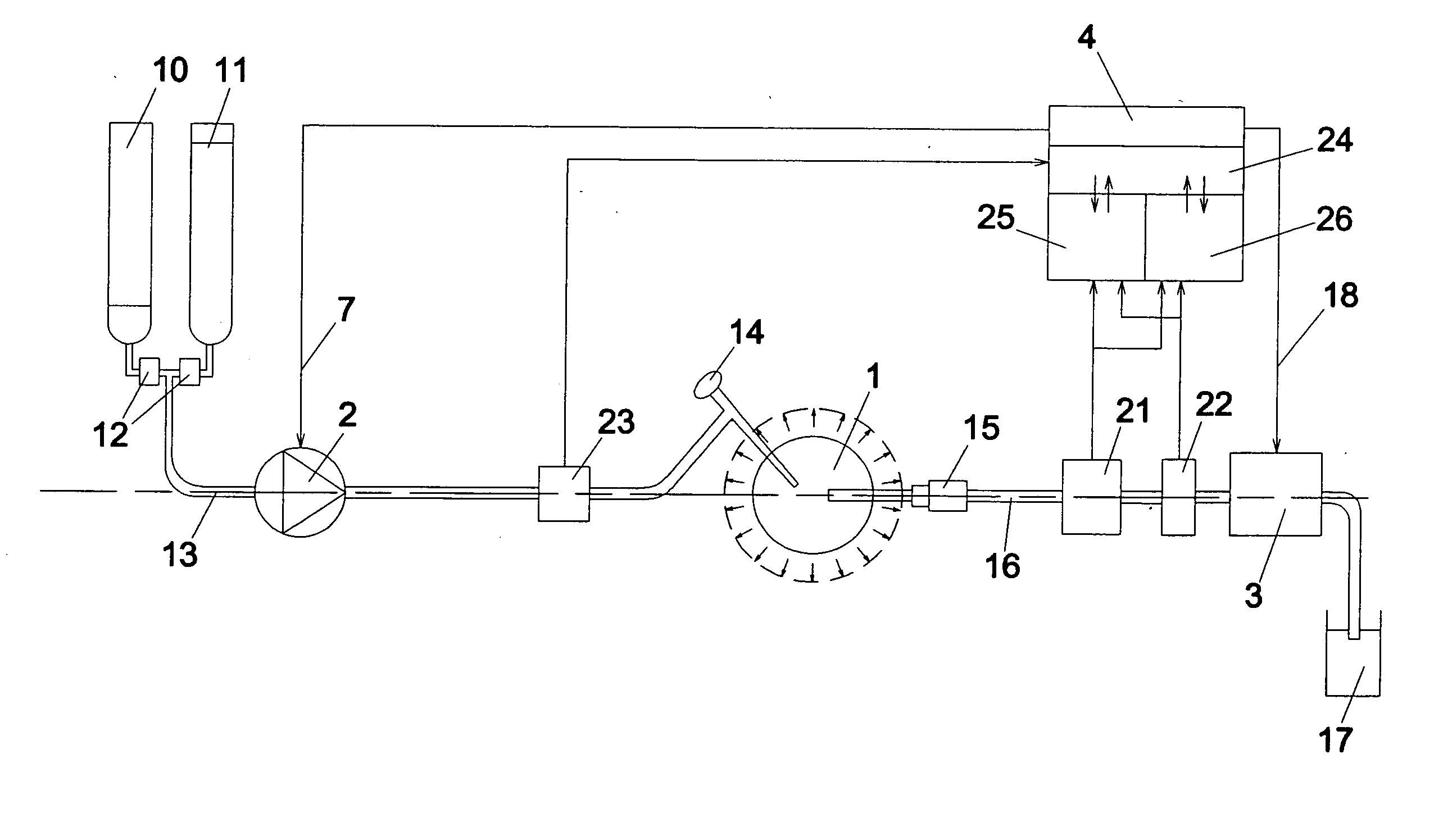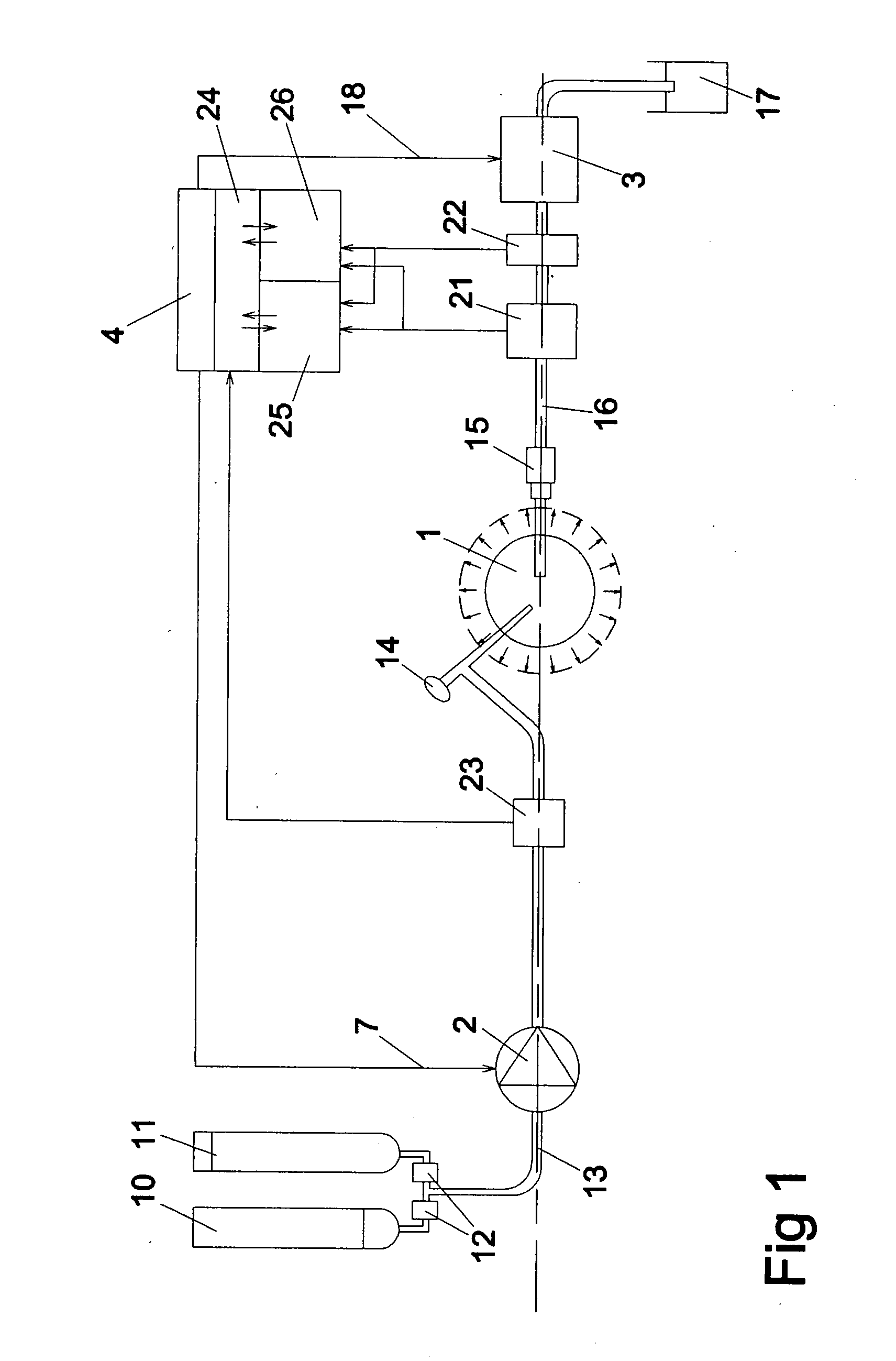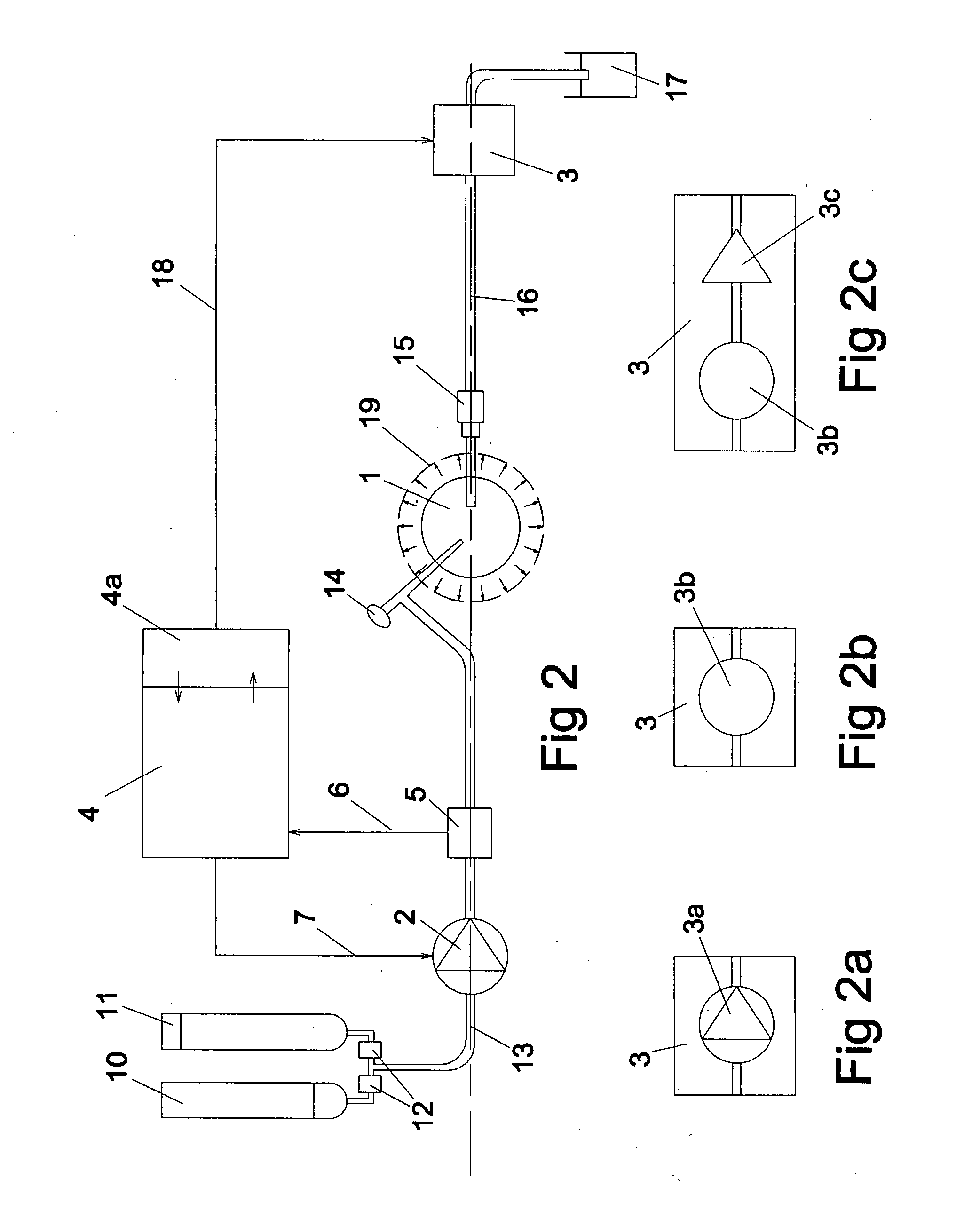Method and device for irrigation of body cavities
a body cavity and irrigation method technology, applied in the field of endoscopic surgery, can solve the problems of resistance reconfirmation and loss of pressure in the system, and achieve the effects of increasing the flow through the body cavity, and keeping the liquid clear
- Summary
- Abstract
- Description
- Claims
- Application Information
AI Technical Summary
Benefits of technology
Problems solved by technology
Method used
Image
Examples
Embodiment Construction
[0044] When a body cavity is irrigated, a peristaltic inflow pump generates a pressure. Due to resistance in the liquid pathway, there is a loss of pressure along it. This pressure loss subsists all the way from the inflow pump to the body cavity, and varies by various components forming the liquid path. The higher the flow, the higher the resistance. This resistance is not linear with respect to flow. At the design of an irrigation system, the resistance values for relevant flow values are to be established in a laboratory environment. Thus, a pressure measured at the input of the system corresponds to an achieved pressure in the body cavity. Then the measured “actual” values for the pressures in the body cavity can be calculated from the flow and the established resistance.
[0045] The method to establish the pressure in the body cavity without measuring pressure in it is further enhanced in the following way: When there is a need for a change in flow or pressure, the acceleration ...
PUM
 Login to View More
Login to View More Abstract
Description
Claims
Application Information
 Login to View More
Login to View More - R&D
- Intellectual Property
- Life Sciences
- Materials
- Tech Scout
- Unparalleled Data Quality
- Higher Quality Content
- 60% Fewer Hallucinations
Browse by: Latest US Patents, China's latest patents, Technical Efficacy Thesaurus, Application Domain, Technology Topic, Popular Technical Reports.
© 2025 PatSnap. All rights reserved.Legal|Privacy policy|Modern Slavery Act Transparency Statement|Sitemap|About US| Contact US: help@patsnap.com



